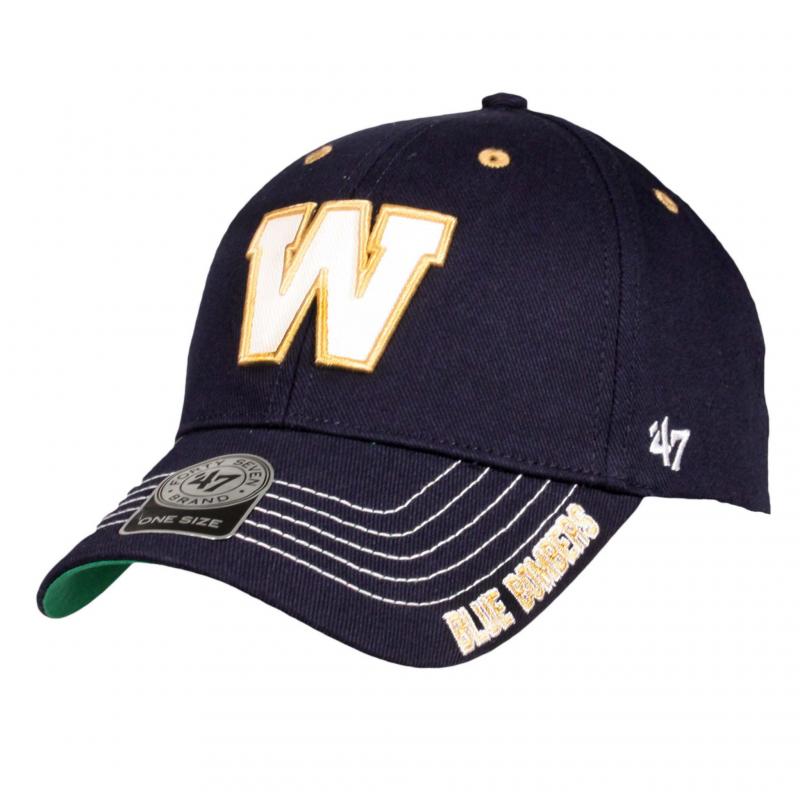
You can wash your prized Winnipeg Blue Bombers cap by soaking it in hot water mixed with a dash of dish soap and borax.
Question: My son bought a $40 baseball hat. I nearly fell over when I saw the price tag. The worst part is the hat is white. What is the best way to clean it? I have heard it’s okay to put it in the dishwasher or washing machine. Any suggestions? Shirley
Answer: Forget about risking the dishwasher. While dishwasher detergent works well, sometimes they leave small irreversible spots on the fabric where bleach from the dishwasher touched the hat. The washing machine may also work, but can damage the rim of the hat, leaving it flimsy or misshaped. Instead, soak it in a bowl of enough hot water to cover the hat, add a half-teaspoon of dish soap and a half-cup of borax. Leave for two or three hours. Scrub if necessary. Rinse and repeat if needed. Dry the hat on an inverted plastic or glass bowl.
Question: I hope you have an alternative to mouse traps or poison. We just don’t have the stomach to kill or, perhaps worse, find maimed but alive mice in a trap. It’s too cruel. This week, two were found alive: one with a crushed jaw, one with an injured leg. We must find a way to repel them from entering the building. Thank you, Jana
Answer: Mice love peanut butter even more than cheese. Obtain an 18-litre bucket with a lid. Cover the bucket and cut a 10 centimetre hole in the lid. Make a ramp to the top of the bucket so mice can climb up and fall in. Spread peanut butter around the hole. Leave the bucket empty and, after mice fall in, take them at least 10 kilometres from your home before releasing them.
If you have mice in your home, flatten an empty toilet paper roll, put peanut butter on one end and place the roll on a counter extending beyond the edge. Put the bucket on the floor underneath, so a mouse walking on the roll will fall in.
To deter mice, spread fabric-softener sheets around where mice like to congregate or shaving cream on a cotton ball or oil of peppermint or Irish Spring soap slivers — these are all mouse deterrents.
Question: I followed a recipe for making cinnamon buns but the results were disappointing. The buns did not rise as I had hoped. Any idea why? Graham
Answer: First, did you turn on your oven light when the buns were rising in the oven? This step is important because it warms up the small space. The temperature of homes will vary, which is anything but friendly to yeast. By using your oven light, you are creating a warm, draft-free environment that is stable. A second possibility of why the buns did not rise is the yeast was either old or bad. Yeast is a living organism and its life is fairly limited. So, if you’re using active dry yeast, one of the first steps is making sure the imprinted expiration date is in order.
If you want to make sure your yeast is active before you dive into a weekend of bread making, begin by activating the yeast. Simply dissolve the yeast in warm water, add a pinch of sugar, cover and let it sit in a warm spot for about 10 minutes. It should be bubbly; a really active batch will have a sort of "foam" on the top of the water, almost as if you poured cold beer into a glass.
Extra tip:
If you’re taking the time to make cinnamon rolls from scratch, it’s worth making them look pretty, too. Instead of cutting cinnamon buns with a knife, use dental floss. Hold a long piece of dental floss underneath the loaf. Draw the floss upward and cross over both ends at the top to slice the dough. Continue this technique for each slice and you will be left with evenly cut, nicely shaped cinnamon dough pieces.
Note: Every user assumes all risks of injury or damage resulting from the implementation of any suggestions in this column. Test all products on an inconspicuous area first.
I enjoy your questions and tips, keep them coming. Need a Presenter on the topic: Effective Speaking or The Power of Words? Check out: Reena.ca



